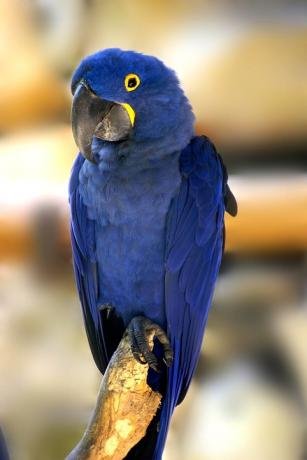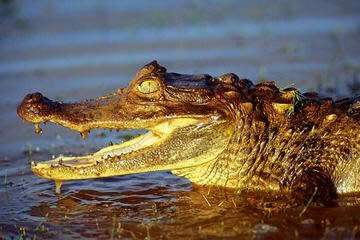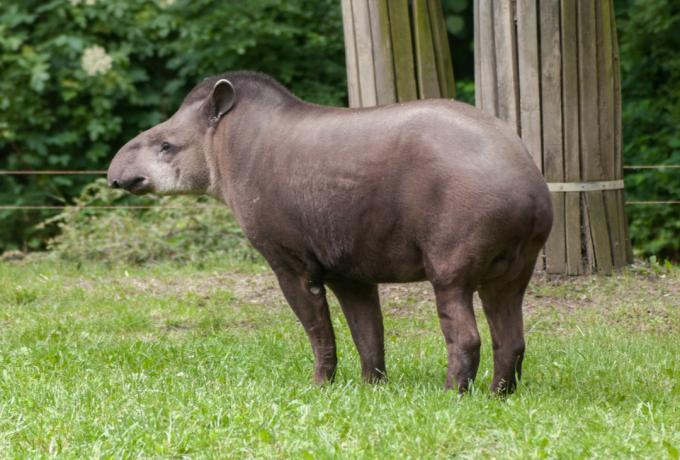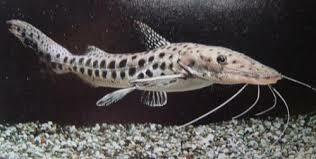
It is located in the Alto Paraguai Hydrographic Basin and is divided into two regions:
see more
Inequality: IBGE discloses the 10 worst states to…
Israel is the 4th strongest military power in the world; check the ranking
In Brazil, it can be found in the states of Mato Grosso and Mato Grosso do Sul. However, it extends over a small portion of Paraguay and Bolivia.
In addition to the richness in vegetation, the biome owns one of the richest faunas in the entire world, in the Pantanal an infinity of species of birds, mammals, reptiles, birds and fish can be found. See which are some of the animals of the Pantanal.
Tuiuiú – Bird symbol of the Pantanal (Jabiru mycteria)

Also known as jaburu and tuiuguaçu, depending on the region, this bird can be found, in addition to the Pantanal, throughout Latin America. Average weight is approximately 8 kg and height is up to 1.4 m in length.
It is mainly characterized by its long legs and the red band around its neck. It lives mainly on the banks of rivers and in sparse trees, where females make their nests high up.
White Egret (Ardea alba)

Despite being found in much of the Brazilian territory, its presence is notorious in the Pantanal region. Also known as the Great Egret, it is a bird of the Pelecaniformes order. It feeds mainly on fish.
Its body greatly facilitates this habit, since its neck and long beak provide agility when grabbing prey on the banks of rivers. It can weigh up to 1.5 kg when adult and length up to 1 m.
Toucan (Ramphastos toco)

There are several species of toucan, however, the one that is present in the Pantanal territory is the Ramphastos toco. It is an animal of diurnal habits that feeds mainly on eggs, lizards, insects, fruits and young of other trees.
It is the largest of all toucans, weighing approximately 540g and measuring approximately 56 cm in length. The most striking characteristic of the species is the exuberant orange beak, which can measure up to 22 cm.
Blue Arara (Anodorhynchus hyacinthinus)

Belonging to the parrot family, there are three species of blue macaw, two of which are endangered it is a is extinct. It can measure up to 1.5 m from the beak to the tip of the tail and weigh up to 1.5 kg.
It is a bird that draws a lot of attention because of its beautiful blue plumage, with yellow circles around the eyes and a band of the same color near the beak. Its eating habits are quite specific, the main source of nutrients for the species are the fruits of the bocaiúva and acuri trees.
Yellow anaconda (Eunectes notaeus)

The anaconda is a South American snake of the Boidae family, there are four species in Latin America, but the endemic species in the Pantanal is the yellow anaconda, which is a little smaller than the green anaconda (Eunectes murinus). It is not a venomous snake, so its strength to kill prey by constriction.
Females are larger than males, reaching up to 40 kg and 4.5 m in length. Their diet is based on birds, fish, eggs, reptiles and small mammals.
Yellow-throated caiman (Caiman latirostris)

It is spread throughout Latin America, and is found in large numbers in the Pantanal region, being a typical animal there. It has a long life, reaching up to 50 years. They have this name because during the mating phase they acquire a yellowish color in the crop region.
They have, on average, 2m in length, although specimens of more than 3.5m have already been found. One of its main characteristics is the wide and short snout. They feed mainly on fish, molluscs, crustaceans, birds, bats and other reptiles.
Capybara (Hydrochoerus hydrochaeris)

The capybara is a rodent, herbivore, and is one of the endemic mammals of the Pantanal. Their habitat is the banks of rivers, regions of swamps and lakes, where they form groups that can have more than 100 animals. It is considered the largest rodent in the world, and can even exceed the weight of 90 kg, 1.2 m in height and 60 cm in height.
Tapir (Tapirus terrestris)

Also known as tapir, the tapir is native to virtually all of South America. It is the largest terrestrial mammal in Brazil, weighing over 300 kg and measuring over 2.4 m in length. It has a proboscis that is used to collect food. Its diet is basically composed of fruits, which gives it an important role in seed dispersal.
One of its main characteristics is the solitary life. They are rarely found in flocks. A tapir's gestation can last more than 400 days, and they give birth to only one calf at a time.
Marsh deer (Blastocerus dichotomus)

The species has already been present in several places in South America, however, it is currently found practically exclusively in the Pantanal region. It is a ruminant mammal, from the deer family. Despite not being endangered, the species is considered vulnerable.
It is considered the largest South American deer. Its weight can exceed 125 kg, with a height of more than 1.2 m. Males are larger than females and have branched horns. It is an animal of diurnal habits, which feeds basically on aquatic plants. It is an important prey for jaguars, both painted and brown.
Jaguar (Panthera onca)

This carnivorous mammal is one of the animals found in the Pantanal. It is the third largest feline in the world, second only to the tiger and lion. The jaguar is seriously threat of extinction, and in some places on the American continent it is already extinct, like the United States.
It is known to be a feline that likes to swim, and therefore its presence is greater in places that have water sources. The average weight varies between 50 and 90 kg, but there are specimens that weigh more than 150 kg. The length varies from 1.1m to 1.85m, not counting the tail. It is a solitary animal, whose bite is fatal to any other animal it encounters.
Piranha (Pygocentrus nattereri)

Although there are many species of this fish, in the Pantanal, the most common is the red piranha. It is a carnivorous freshwater fish, which is also widely used in local cuisine, both fried and in the famous piranha broth of Mato Grosso do Sul. They measure, on average, between 14 and 26 cm.
It is a very aggressive predatory fish, whose jaw is extremely strong. They are easily recognized by their dentition, which is a single row of extremely sharp teeth, responsible for one of the worst bites among bony fish. It is common to attack humans, especially when there is blood in the water.
Pintado (Pseudoplatystoma corruscans)

Often found in the Pantanal, the guinea fowl is a freshwater fish that belongs to the Pimelodidae family. It has nocturnal habits, and generally lives in river channels, under water hyacinth nets. It is a carnivorous fish, which feeds mainly on smaller fish.
Maximums can reach over 1.85 m and weigh approximately 85 kg. It is highly appreciated in cooking. In Cuiabá, mujica de Pintado is a very traditional dish.
Golden (Salminus brasiliensis)

It receives this name due to its golden yellow color. Its presence is frequent in Brazilian rivers, and for a long time, it was called Salminus maxillosus. It is well known by sport fishermen because of its bravery and resistance when hooked. It is a species very coveted by these athletes, and called by them, the star of the Pantanal.
It can be over 1.3 m and weigh over 25 kg. It has very sharp teeth and attacks on humans happen with some frequency.
